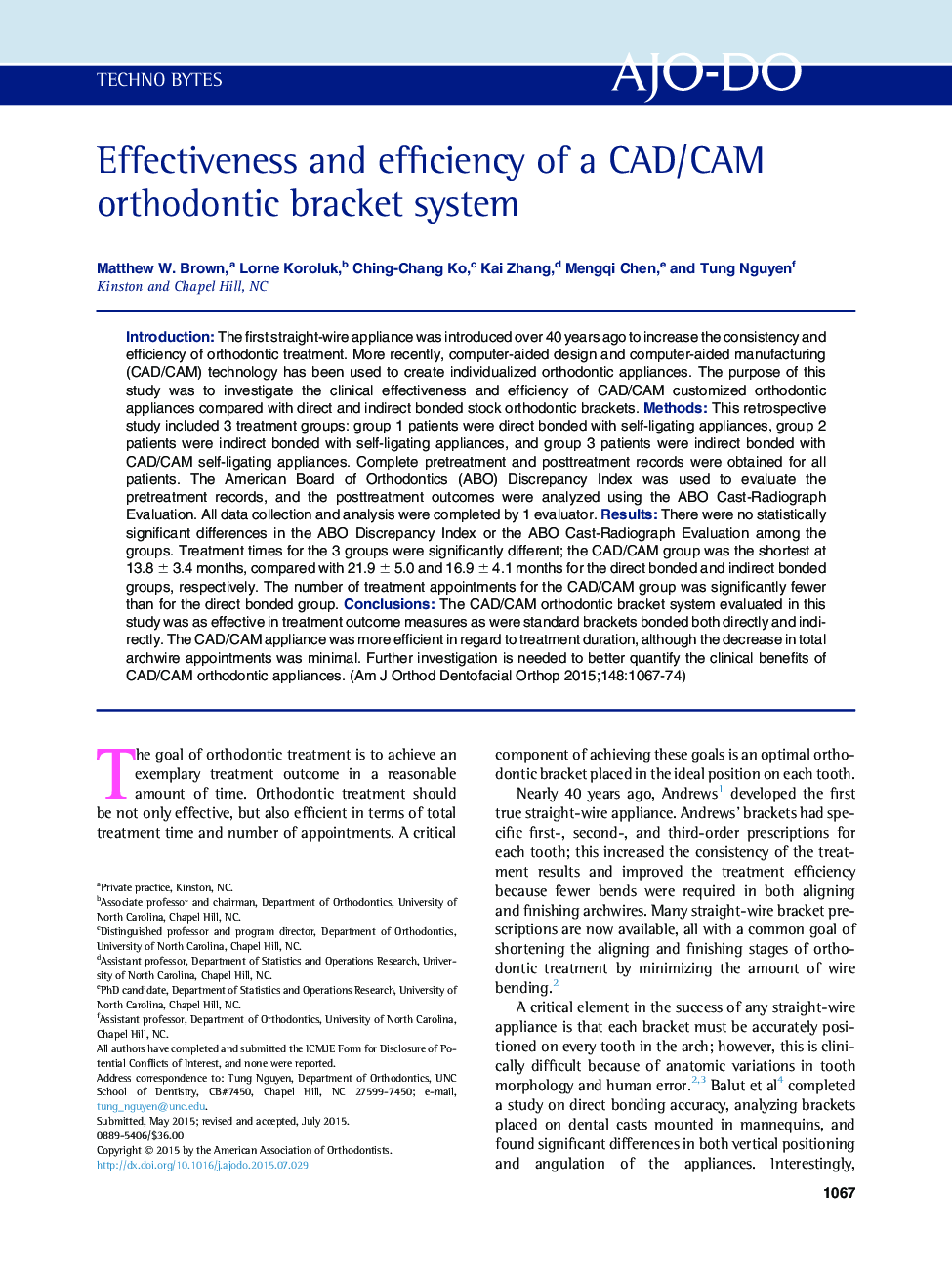| Article ID | Journal | Published Year | Pages | File Type |
|---|---|---|---|---|
| 3115274 | American Journal of Orthodontics and Dentofacial Orthopedics | 2015 | 8 Pages |
•Treatment outcomes were compared in direct, indirect, and CAD/CAM bonded groups.•Treatment outcomes (effectiveness) were similar in all 3 groups.•Treatment time (efficiency) was shorter in the CAD/CAM group.
IntroductionThe first straight-wire appliance was introduced over 40 years ago to increase the consistency and efficiency of orthodontic treatment. More recently, computer-aided design and computer-aided manufacturing (CAD/CAM) technology has been used to create individualized orthodontic appliances. The purpose of this study was to investigate the clinical effectiveness and efficiency of CAD/CAM customized orthodontic appliances compared with direct and indirect bonded stock orthodontic brackets.MethodsThis retrospective study included 3 treatment groups: group 1 patients were direct bonded with self-ligating appliances, group 2 patients were indirect bonded with self-ligating appliances, and group 3 patients were indirect bonded with CAD/CAM self-ligating appliances. Complete pretreatment and posttreatment records were obtained for all patients. The American Board of Orthodontics (ABO) Discrepancy Index was used to evaluate the pretreatment records, and the posttreatment outcomes were analyzed using the ABO Cast-Radiograph Evaluation. All data collection and analysis were completed by 1 evaluator.ResultsThere were no statistically significant differences in the ABO Discrepancy Index or the ABO Cast-Radiograph Evaluation among the groups. Treatment times for the 3 groups were significantly different; the CAD/CAM group was the shortest at 13.8 ± 3.4 months, compared with 21.9 ± 5.0 and 16.9 ± 4.1 months for the direct bonded and indirect bonded groups, respectively. The number of treatment appointments for the CAD/CAM group was significantly fewer than for the direct bonded group.ConclusionsThe CAD/CAM orthodontic bracket system evaluated in this study was as effective in treatment outcome measures as were standard brackets bonded both directly and indirectly. The CAD/CAM appliance was more efficient in regard to treatment duration, although the decrease in total archwire appointments was minimal. Further investigation is needed to better quantify the clinical benefits of CAD/CAM orthodontic appliances.
